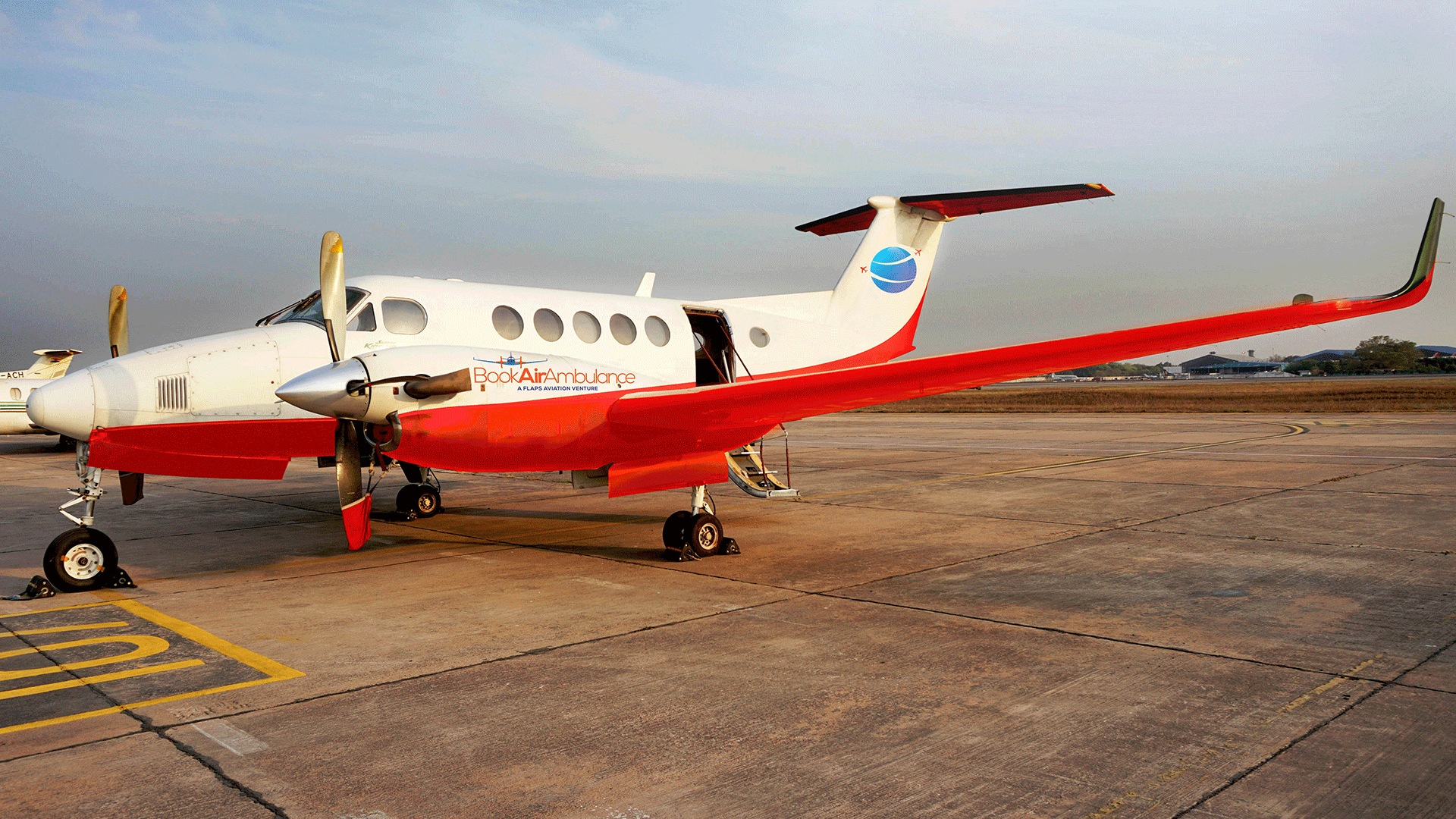What role does technology play in enhancing air-ground ambulance services
The healthcare industry has seen a massive transformation over the years, with technology playing a significant role in revolutionizing the way medical services are delivered.

Historical Challenges in Emergency Medical Services
Emergency medical services (EMS) have come a long way since their inception. Historically, EMS was run by volunteers, who had little to no formal training in air ambulance emergency medical care. This resulted in a lack of standardization in the delivery of care, which led to inconsistencies in patient outcomes.
As EMS evolved and became more professional, it became evident that there were still significant challenges to be overcome. One of the primary challenges was the ability to provide timely and efficient care to patients in remote or hard-to-reach areas. In many cases, the only way to transport patients in need of critical care was by ground ambulance, which could take hours, if not days, to reach their destination.
Another challenge was the lack of interoperability between EMS providers. Different EMS agencies often used different communication systems, which made it difficult to coordinate care and share patient information.
Technology has been a game-changer in addressing these challenges. Today, air-ground ambulance services can transport patients quickly and efficiently, even in remote areas. They also have access to state-of-the-art medical equipment and can provide advanced medical care during transport.
In addition, advances in communication technology have made it possible for EMS providers to share patient information in real-time, improving the coordination of care and ensuring that patients receive the best possible treatment. With the help of technology, EMS providers can now provide faster, more efficient, and more effective care, saving countless lives in the process.
The Impact of Technology on the Air-Ground Ambulance Industry
The impact of technology on the helicopter ambulance industry has been nothing short of game-changing. Advanced technology has allowed for faster and more efficient communication and transportation, resulting in better patient outcomes and increased survival rates.
One of the primary technological advancements in the air-ground ambulance industry has been the development of telemedicine. Telemedicine allows medical professionals to remotely assess and treat patients, providing critical care while en route to the hospital. This has been particularly beneficial in rural areas where access to medical facilities is limited.
Another significant advancement has been the use of GPS and real-time traffic information to optimize routes and reduce transport times. This has not only improved patient outcomes but has also allowed air-ground ambulance services to increase their efficiency and reduce costs.
In addition, the use of drones in the air-ground ambulance industry has been gaining momentum. Drones are capable of delivering medical supplies and equipment to remote or hard-to-reach areas, providing fast and efficient care to patients in need.
Overall, the impact of technology on the air-ground ambulance industry has been instrumental in improving patient outcomes and increasing efficiency. As technology continues to advance, we can expect to see even more innovative solutions in the air-ground ambulance industry, further improving the quality of care for patients in need.
Benefits of Technology for Air-Ground Ambulance Services
Technology has revolutionized the way air-ground ambulance services operate. It has brought about many benefits that have changed the game for emergency medical services (EMS) providers. One of the benefits of technology is that it has improved communication and coordination between EMS providers, hospitals, and emergency response teams. Real-time data sharing allows for a better understanding of the patient's condition and helps EMS providers make informed decisions.
Moreover, technology has enabled EMS providers to track and monitor patients during transport. GPS tracking and remote monitoring systems allow for real-time location updates and vital sign monitoring. This ensures that patients receive the appropriate level of care during transport and allows EMS providers to respond promptly to any changes in the patient's condition.
Another benefit of technology is that it has improved the safety of air-ground ambulance services. Advanced safety systems such as obstacle avoidance systems and enhanced weather tracking have reduced the risk of accidents and improved overall safety during transport. In addition, the use of drones for medical supply delivery has further reduced the risk of accidents in difficult-to-reach areas.
In conclusion, technology has played a game-changing role in air-ground ambulance services, providing numerous benefits such as improved communication, patient monitoring, and safety. As technology continues to evolve, it is likely that we will see even more advancements that will further enhance the capabilities of EMS providers and improve patient outcomes.
Improved Communication and Coordination
The use of technology has greatly improved the communication and coordination between air-ground ambulance services. In the past, communication between the ground ambulance and the air ambulance was limited to radio communication, which could sometimes be unreliable, especially in remote areas or during bad weather conditions. However, with the advancement of technology, communication has become faster, more reliable, and more efficient.
One such technology is the use of telemedicine. With telemedicine, the ground ambulance crew can communicate with a doctor in real-time, who can provide medical guidance and advice on the best course of action for the patient. This not only improves the coordination between the ground and air ambulance crew but also ensures that the patient receives the best possible care.
In addition, the use of GPS technology has made navigation and coordination much easier. The air ambulance crew can track the location of the ground ambulance and plan the best route to the nearest hospital. This helps to save time and ensures that the patient receives timely medical attention.
Another technology that has greatly improved communication and coordination is the use of mobile apps. With mobile apps, the ground ambulance crew can share patient information and medical records with the air ambulance crew in real time. This ensures that the air ambulance crew has all the necessary information to provide the best possible care to the patient.
Overall, the use of technology has greatly improved the communication and coordination between air-ground ambulance services, which has resulted in better patient outcomes and saved lives.
Navigation and Routing Advancements
With the advancements in technology, navigation, and routing have become much more efficient and effective for air-ground ambulance services. Real-time traffic updates, weather reports, and alternate route suggestions are now available to ambulance crews, enabling them to get to their destination much faster and safer.
The use of GPS tracking devices in ambulances allows for the monitoring of the ambulance's location, speed, and status in real time. This information can be shared with the hospital or medical facility receiving the patient, allowing them to prepare for the arrival of the ambulance and the patient.
Additionally, routing software has been developed specifically for air-ground ambulance services, taking into account factors such as the type of patient being transported, the condition of the patient, and the urgency of the situation. This software can calculate the fastest and most efficient route, while also factoring in potential obstacles such as road closures or traffic accidents.
The combination of GPS tracking and routing software has revolutionized the way air-ground ambulance services operate. Not only does it allow for faster and safer patient transport, but it also enables medical facilities to provide better care and treatment by being better prepared for the patient's arrival.
Telemedicine and Remote Consultation
Telemedicine and remote consultation have revolutionized the healthcare industry, and air-ground ambulance services are no exception. With the help of technology, doctors and medical professionals can now provide real-time assistance to patients in remote locations. This has been a game-changer in air-ground ambulance services, as it allows medical professionals to diagnose and treat patients on the go.
Remote consultation has also helped in reducing the time required for transportation of patients. In the past, patients had to be transported to a medical facility before they could receive treatment. This process was not only time-consuming but also risky for the patient. With remote consultation, medical professionals can evaluate the patient's condition and provide treatment on the spot, reducing the need for transportation.
Telemedicine has also enabled medical professionals to share medical records and images in real time. This means that doctors and medical professionals can collaborate on a patient's treatment plan, even if they are in different locations. This has been particularly helpful in cases where a patient's condition requires the expertise of multiple medical professionals.
Overall, the integration of telemedicine and remote consultation in air-ground ambulance services has been a game-changer. It has improved patient outcomes, reduced transportation time, and enabled medical professionals to collaborate in real-time. As technology continues to advance, we can expect to see even more innovative solutions that will further improve the air-ground ambulance services.
Improved Safety and Patient Outcomes
One of the most important roles technology plays in air-ground ambulance services is improving safety and patient outcomes. Modern technology allows for faster and more accurate diagnoses, which is critical in emergency situations where every second counts. For example, diagnostic equipment that can quickly identify a patient's condition can be the difference between life and death.
Technology also helps to improve patient outcomes by allowing for more efficient and effective treatment. For instance, air ambulance services can carry advanced medical equipment and medication that would not be available on a ground ambulance. This can help stabilize a patient's condition and make them more comfortable during the transport process.
In addition to improved treatment options, technology also allows for more accurate tracking and communication during transport. GPS tracking systems and real-time communication tools can ensure that the ambulance crew is aware of any changes in the patient's condition or any obstacles in the transport route. This allows for quick adjustments to be made, ensuring that the patient is always receiving the best possible care.
Overall, technology has played a game-changing role in the air-ground ambulance industry, improving safety and patient outcomes. As technology continues to evolve, we can expect to see even more advances in this critical field, leading to even better care for patients in need.
Economic Benefits of Technology in Air-Ground Ambulance Services
The use of technology in air-ground ambulance services has brought about a significant reduction in costs while improving the overall quality of care provided. The use of telemedicine, for instance, has revolutionized the way medical care is delivered to patients. With telemedicine, physicians can consult with patients remotely, reducing the need for costly and time-consuming transfers to healthcare facilities.
Additionally, technology has enabled the use of advanced medical equipment on board air-ground ambulances, reducing the need for multiple trips to the hospital or for expensive equipment purchases. The use of GPS technology has also improved response times, reducing the time it takes for an ambulance to reach a patient in need. This, in turn, reduces hospitalization times, saving money for both patients and healthcare providers.
Moreover, technology enables better tracking of patients' medical history, medications, and allergies, ensuring that patients receive tailored treatment that is specific to their medical needs. This not only improves the quality of care delivered but also reduces the likelihood of medical errors, which can be costly and even life-threatening.
In conclusion, the use of technology in air-ground ambulance services has brought about numerous economic benefits, including reduced costs, improved response times, and better patient outcomes. As technology continues to advance, we can expect even more game-changing advancements in the field of air-ground ambulance services.
What's Your Reaction?




















.jpg)